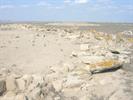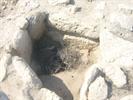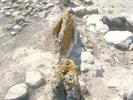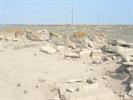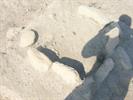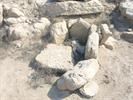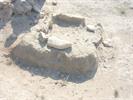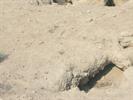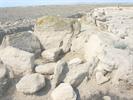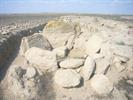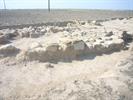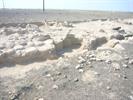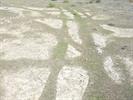While Gobustan's petroglyphs have been designated as a national historical landmark since 1966, many of Azerbaijan's not-so-well-known ancient monuments are literally neglected.
Turkan settlement is also interesting due to remains of Cart Ruts - a phenomenon found throughout the Mediterranean Sea region and are particularly well developed in Malta. Cart ruts are parallel grooves or channels carved directly into the rock, looking much like an ancient roadway. One can't help but wonder what purpose they served. How were they cut out of the surface of the rock? When? Why? No one knows for sure, and there seems to be very little evidence available to make any sort of judgment. Popular opinion suggests they may have been used in the transportation of megaliths as they are most often found in association with Neolithic temples and burial mounds. The base of the rut may have been lubricated, enabling a sledge to be dragged from a quarry to a building site. As they are evidently the work of an ancient seafaring people, the question arises as to why and how they are present in the Caspian Sea region. Could this be evidence of an elevated sea level due to ice age meltwater and a connection to the Black Sea via the Kuma Manych depression to the north of the Caucasus mountains?
In Azerbaijan, these cart ruts vary in depth from about 5 to 50 cm. The depth of each rut depends on the relief of the rocky surface. Two or three ruts (or, in one case, as many as five) run in parallel to each other, generally about 1.5 meters apart. The ruts are clearly manmade. Sometimes they extend for up to 100 meters; Perhaps these tracks even continue down into the Caspian Sea.
If you're planning a trip to Azerbaijan you may be interested ▶ Azerbaijan highlights - For those who prefer to go unbeaten path, to explore less visited places and check national charisma of this small country in Southern Caucasus on the edge of Europe.




